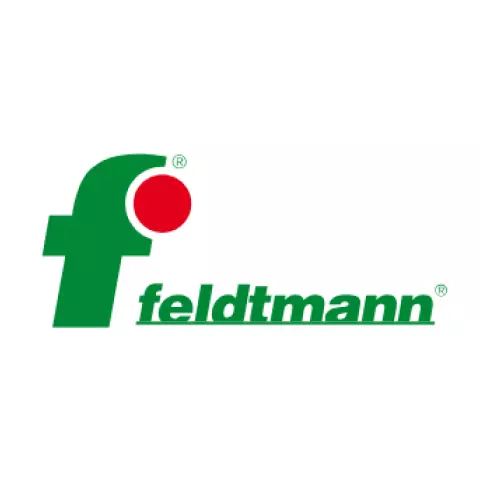EKASTU ABE2K1 Combi Filter Bls® 425
Feldtmann
visit storeProduct description
Standard: En 14387 Protection Against: Organic Gases And Vapors With Boiling Point > 65° C, Inorganic Gases And Vapors & Acid Gases And Vapors, Class 2 Amm oniac And Derivatives, Class 1
• Thread Connection According To En 148 1
The visual appearance of the respirator, which may affect workplace compliance, visibility requirements, and professional appearance.
- Respiratory Protection
- Replacement part
Request a free sample
Test first and buy later. Visit any product page to request your free sample.
Standards and labels
EN 14387:2004 is a European standard that sets guidelines for self-contained breathing apparatus (SCBA) used by firefighters and other emergency responders. It states how the SCBA should work, how long it should last and how easy it should be to use. To make sure the SCBA meets these guidelines, it goes through testing. Possible test results include whether the SCBA met the requirements set in the standard.
Test results
Filter Type BEN 14387:2004 outlines the requirements for gas filters and combined filters used in respiratory protection devices. The 'Filter Type B' designation indicates that the filter is designed to protect against inorganic gases and vapors, such as chlorine, hydrogen sulfide, and hydrogen cyanide. The test method for this type of filter involves exposing it to specified concentrations of representative inorganic gases and monitoring the filter's ability to prevent breakthrough within a set period under defined conditions. Products that meet the 'Type B' standard are particularly vital in industries such as chemical manufacturing, waste treatment, and mining, where exposure to harmful inorganic gases can occur. These filters play a crucial role in ensuring worker safety by providing reliable respiratory protection against specific hazardous gases.
Filter Type AEN 14387:2004 sets the requirements for gas filters and combined filters used in respiratory protective devices. The 'Filter Type A' designation indicates that the filter is specifically designed to protect against organic gases and vapors with a boiling point above 65°C. The test method used for certifying this type of filter involves exposing it to a specific concentration of a test gas (like carbon tetrachloride for Type A filters), measuring the filter's capacity to adsorb the gas, and ensuring that it does not exceed permissible limits of breakthrough. The practical implication for products meeting the 'Type A' standard is that they are suitable for use in environments where organic solvents and other similar organic compounds are present, providing essential safety to workers in industries like chemical processing, painting, and agriculture, where exposure to organic vapors is a common hazard.
Filter Type EEN 14387:2004 defines the criteria for gas filters and combined filters used in respiratory protective devices, with 'Filter Type E' specifically targeting protection against sulfur dioxide and other acidic gases and vapors. The designation indicates that the filter has been rigorously tested for its ability to adsorb acidic components effectively. The testing involves exposing the filter to a controlled environment with a specific concentration of acidic gases like sulfur dioxide, measuring the filter's capacity to prevent breakthrough within a defined time frame under standardized conditions. Filters that meet the Type E standard are indispensable in industries such as pulp and paper manufacturing, chemical processing, and metallurgy, where acidic gases are frequently emitted. They are critical for safeguarding workers' health by ensuring effective respiratory protection against harmful acidic environments.
Filter Type KEN 14387:2004 defines the specifications for gas filters and combined filters for respiratory protection, with 'Filter Type K' specifically aimed at protecting against ammonia and organic ammonia derivatives. This designation ensures that the filter has undergone rigorous testing to prove its efficiency in adsorbing ammonia gases effectively under specified test conditions, such as particular concentrations and exposure times. The test involves challenging the filter with an ammonia atmosphere and measuring its ability to maintain filtration effectiveness without breakthrough. Filters meeting the Type K standard are critical in environments like agricultural facilities that use ammonia-based fertilizers, petrochemical plants, and refrigeration industries. They safeguard workers by preventing the inhalation of harmful ammonia, which can cause significant respiratory irritation and other health issues.
CE Marking is a label that shows a product meets certain safety and environmental standards set by the European Union. To get the CE Marking, a company must test and certify their product meets these standards. CE Marking is required for many products sold in the EU, including electronics, machinery, toys and medical devices. It helps ensure that products are safe for consumers and the environment, and allows for easy trade within the EU.
Feldtmann delivery terms
Free delivery for all Feldtmann products
779,48 €
Price per 60 pcs
12,99 € / piece
Free delivery
A package contains 60 pieces
Need larger quantities?
Other products you may like
Recently viewed
Need help?
Get help from our experts
Other products you may like
Similar products you may like
Autonomous sourcing platform
The most efficient way to source and order supplies for your operations
Sourcing
Ordering
List products you’re looking for and we’ll find the best products and prices for you – all for free.
Need help?
Get help from our experts



